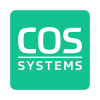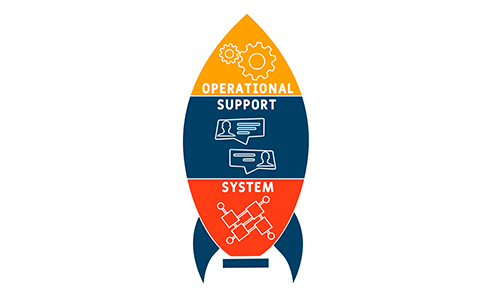
Private providers just aren’t building fiber at a fast-enough pace today in the USA. Local leaders in an increasing number of communities are looking into options for how to save their residents from being left in the dark when our way of life and economy is moving online. This is especially true in rural areas where the private providers show no interest in investing since the return on investment isn’t good enough with low subscriber density and numbers. In other parts of the world publicly built fiber infrastructure is often operated with an Open Access Model and it is winning ground in the USA as well. But there is quite a lot of confusion about what the term means, so here is a walkthrough of the most common models with pros and cons of each. A hint to you who is reading this – read to the end, we save the best to last.
Introduction to Open Access
In short the Open Access model builds on the concept of layers.
- The first layer is the Infrastructure layer, which is the conduit and physical cables that make up the network. It is also called the Passive
- The second layer is the Operations layer, which is lighting up the physical network with electronics and making it all work. It is also called the Active
- The third layer is the Services layer, which simply consists of all the services delivered over the network. People tend to think of the traditional Internet, Phone (VOIP) and TV (IPTV) services, but we see an increase in other services like telehealth, home security, IoT and other Smart services.
The idea is to separate these layers, so that one entity can own and maintain the Infrastructure layer and then lease it out for others to deliver services. Much like an airport works. One entity builds the airport and all the airlines pay when they use it. Imagine how ridiculous and expensive flying would be if every airline had to build their own airports! That is how telecommunications generally work today.
What people have questions about is generally the operations layer. What does it really mean? Well, let’s compare all the data flowing into and out of the network to water. If it was important to get the right stream of water to a specific house all the way from the water tower, the only practical way would be to build a separate pipe all the way to that house. That is basically what happens in the operations layer. Using controller software, you create a tunnel through the network to every single end user, in which the service is delivered. This is what every service provider does when they start up a new service, but in the scenario with a single provider they typically make no significant difference between the operations and the services layer. That separation is important when multiple service providers can have their own tunnels and you need to keep track of who has which tunnel set up.
With that introduction given it is time to start listing some of the most common Open Access models used today. Please note that there is no standardized vocabulary, which is the reason why this blog post is written in the first place! You might find other names for these models. Also, this has the outlook of a municipality building a publicly owned fiber infrastructure. The assumption is also that it’s a positive thing to give consumers multiple choices for services and providers. Private service providers are in this business to make money, which can obviously make them have a different opinion on some of this.
Dark fiber Open Access
In networks you talk about backbone, middle mile and last mile. If comparing to a road system the backbone would be the highways, connecting cities to each other. The middle mile would be all the small streets within the city, and the last mile, or the “drop”, are the driveways at peoples’ houses. Without a backbone your city would have no means of effectively reaching the rest of the world’s network and without the middle mile the houses would have nothing to connect to. In the Dark fiber model, the community is only providing the passive infrastructure layer and they allow private providers to lease access to it and use it as they wish.
Dark fiber backbone Open Access
In this model the community would pay for the highway into the city, ensuring there is capacity enough for private service providers to sell high quality services.
Pros
- The minimum investment needed to likely improve broadband quality
- No need for knowledge in network operations
- No need to invest in electronics
- Might reduce the cost enough for private providers to start investing in the community
Cons
- There is no guarantee a provider will build out
- If a provider builds, they will likely only build where the business case is the best and leave some residents without
- Since the final connection to the end customers will be built by private providers, the community will have to reach agreements for using their infrastructure in order to deliver community services (smart services), which will also not reach all residents (see above).
- Customers will in reality have no choice. The investment done by the first provider in middle mile and last mile is too much of a barrier for a new provider to come in. Overbuilding is very uncommon in fiber. The common monopolistic problems of high price and sometimes low quality are likely.
Dark fiber middle mile Open Access
The community would also build the fiber in the streets and then allow private providers to bring the electronics to light up services and build the drops to the houses.
Pros
- With almost all of the investment done , it’s very likely private providers will start investing in the community
- If all streets have fiber, even the weaker areas of town could be connected
- No need for knowledge in network operations
- No need to invest in electronics
Cons
- The provider will likely only build to residents with stronger economy since they have profit targets to reach and don’t want customers who might be bad payers.
- Since the final connection to the end customers will be built by private providers, the community will have to reach agreements for using their infrastructure in order to deliver community services (smart services), which will also not reach all residents (see above).
- Customers will in reality have no choice. The investment done by the first provider in last mile is too much of a barrier for a new provider to come in. Overbuilding is very uncommon in fiber. The common monopolistic problems of high price and sometimes low quality are likely.
Dark fiber last mile Open Access
In this model the community builds all of the fiber, but they lease it to a private provider/s who would install the electronics, operate the network and sell services.
Pros
- With all of the investment in fiber done , private providers will definitely start lighting up customers
- If all properties have a fiber connection, even the weaker areas of town could be connected
- No need for knowledge in network operations
- No need to invest in electronics
Cons
- The provider will likely only invest in and install equipment to residents with stronger economy since they have profit targets to reach and don’t want customers who might be bad payers.
- Even though the final connection to the end customers is owned by the city, the community will still have to reach agreements for using that infrastructure in order to deliver community services (smart services), as private providers own the electronics and thereby control the network.
- Customers will in reality have reduced choice. The investment done by the first provider in electronics to serve a specific area and investment in electronics at the customers home, will be prohibitive for a new provider to come in. The common monopolistic problems of high price and sometimes low quality are likely to still exist.
- In order to enable multiple providers to coexist, you need multiple fibers and also enough space in huts, handholes, and such to house multiple providers electronics.
- The total cost will be higher since electronics will not be utilized to a maximum (two providers in the same area might have their own switches, which are both not used to a maximum.
Lit Open Access – Single provider
In this model the community would build the entire fiber network and also invest in the electronics all the way to the ONT in the customers’ homes and also build up operations capacity (an alternative is to lease the network or hire a neutral operations company to light and operate the network). Service providers are invited to resell services that are offered to them by the operator on wholesale terms which are equal to all providers. The service providers would still own and bill their customers. In this model the customer can freely choose between providers, but only have one provider at a time.
Pros
- With all of the investment in fiber and electronics done, there is a very small hurdle for providers to start selling services on the network. Selling services goes from CAPEX intensive to an OPEX game.
- If the ONT is installed by the community network, the investment for providers is almost none and even the weaker areas of town could be serviced by private providers.
- The common monopolistic problems of high prices and low quality of service will be reduced since customers can change providers if unhappy.
- The assortment of services with multiple providers will probably be larger.
- Lower prices, higher quality and bigger assortment will improve take-rates and both revenue and other benefits of a higher utilization will increase
- The city now owns the entire network and can freely roll-out smart city services and decide which providers of other IoT and smart city services are welcome to deliver services on the network.
- Investments in electronics is kept to a minimum, since new hardware will only be installed when needed. (never two half full switches from two different providers in the same rack.)
Cons
- This is the largest investment a community could do (an option would be to invite a neutral operations partner who could bring the electronics and/or operate the network).
- If doing their own operations, the city would have to build an operations organization.
- Customers will have choice of providers, but not full freedom to choose what they like from multiple providers at the same time, which reduces the value of the network greatly since not all providers will be fit to deliver the services of the future.
True Open Access (Lit Open Access – Multiple providers)
The difference between the previous model and the True Open Access model is that the customer can freely choose between not only providers, but even on a service by service level. They have the freedom to build exactly the bundle of services from any number of providers that suits them best. This means maximum power to the consumer, an open and level playfield for any kind of provider and no restrictions for introduction of future services.
Pros
- With all of the investment in fiber and electronics done, there is a very small hurdle for providers to start selling services on the network.
- With the ONT being installed by the community network, the investment for providers is almost none and even the weaker areas of town could be services by private providers.
- The common monopolistic problems of high prices and low quality of service will be reduced since customers have full choice of providers and services.
- The assortment of services with multiple providers will be larger and providers who aren’t selling the traditional internet service can also come on the network since customers can buy services from multiple providers at the same time.
- Lower prices, higher quality and bigger assortment will improve take-rates, and both revenue and other benefits of a higher utilization will increase
- The city now owns the entire network and can freely roll-out smart city services and decide which providers of other IoT and smart city services are welcome to deliver services on the network.
- Investments in electronics is kept to a minimum, since new hardware will only be installed when needed. (never two half full switches from two different providers in the same rack.)
Cons
- This is the largest investment a community could do (an option would be to invite a neutral operations partner who could bring the electronics and/or operate the network).
- If doing their own operations, the city would have to build an operations organization.
The True Open Access model is obviously the most complex to operate, but also the one that has no built-in restrictions. With this model you as a community are in full control of your digital future. What you need is a software platform that was built ground-up to support this business model.
COS Business Engine is the platform we launched in 2008 to automate the operations of True Open Access Networks. It is today used to Operate around 150 True Open Access Networks Worldwide, big and small.
For additional information contact:
Isak Finér
CMO & VP North America
COS Systems
+1 (540) 988-3224
isak.finer@cossystems.com
www.cossystems.com






 Source
Source 










